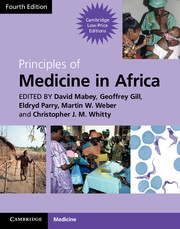Book contents
- Frontmatter
- Contents
- Contributors
- Foreword
- Section 1 Health and disease
- Section 2 Mother and child health
- Section 3 Infection: general principles
- Section 4 Major common infections
- Section 5 Bacterial infections
- 22 Typhoid, paratyphoid and non-typhoid Salmonella infections
- 23 Streptococcus pyogenes and Staphylococcus aureus
- 24 Rickettsial infections
- 25 Brucellosis
- 26 Leptospirosis
- 27 Relapsing fever
- 28 Plague
- 29 Anthrax
- 30 Tetanus
- 31 Diphtheria
- 32 Leprosy
- 33 Cholera
- Section 6 Viral Infections
- Section 7 Protozoal infections
- Section 8 Helminth infections
- Section 9 Fungal infections
- Section 10 Non-communicable diseases
- Section 11 Diseases of body systems
- Section 12 Cancer and Palliative Care
- Section 13 Venoms and Poisons
- Index
- References
27 - Relapsing fever
from Section 5 - Bacterial infections
Published online by Cambridge University Press: 05 March 2013
- Frontmatter
- Contents
- Contributors
- Foreword
- Section 1 Health and disease
- Section 2 Mother and child health
- Section 3 Infection: general principles
- Section 4 Major common infections
- Section 5 Bacterial infections
- 22 Typhoid, paratyphoid and non-typhoid Salmonella infections
- 23 Streptococcus pyogenes and Staphylococcus aureus
- 24 Rickettsial infections
- 25 Brucellosis
- 26 Leptospirosis
- 27 Relapsing fever
- 28 Plague
- 29 Anthrax
- 30 Tetanus
- 31 Diphtheria
- 32 Leprosy
- 33 Cholera
- Section 6 Viral Infections
- Section 7 Protozoal infections
- Section 8 Helminth infections
- Section 9 Fungal infections
- Section 10 Non-communicable diseases
- Section 11 Diseases of body systems
- Section 12 Cancer and Palliative Care
- Section 13 Venoms and Poisons
- Index
- References
Summary
Relapsing fevers are acute infections caused by spirochaetes of the genus Borrelia. There are two epidemiological forms: louse-borne relapsing fever, which can be epidemic, is transmitted only between humans by the body louse, whereas tick-borne relapsing fever is a zoonosis and does not appear in epidemics.
The problem in Africa
Louse-borne relapsing fever is endemic in the Sudan, and Rwanda and the highlands of Ethiopia, which are its main endemic focus. LBRF caused world-wide epidemics that affected several million people following the two World Wars (Bryceson et al., 1970). Localized epidemics still occur, as at the end of Ethiopia's civil war. Untreated mortality is high, exceeding 40 per cent in some epidemics; treatment reduces mortality to 1–5 per cent. Refugees, whether from war or disaster, are at high risk.
The organism and its vector
Borrelia recurrentis, a slender, motile, microaerophilic organism, causes LBRF. It is 10–20 microns long, and 0.2–0.5 microns wide, with 4–10 loose coils. It contains 9–11 periplasmic flagellae. Borrelia recurrentis can be grown and propagated in artificial media; its genome is a degraded subset of tick-borne Borrelia duttoni and its genomic errors account for its virulence (Lescot et al., 2008). A variable lipoprotein, structurally homologous to murein lipoprotein of Escherichia coli (Scragg et al., 2000) induces tumour necrosis factor in the reaction to treatment (Vidal et al., 1998).
- Type
- Chapter
- Information
- Principles of Medicine in Africa , pp. 334 - 337Publisher: Cambridge University PressPrint publication year: 2013



